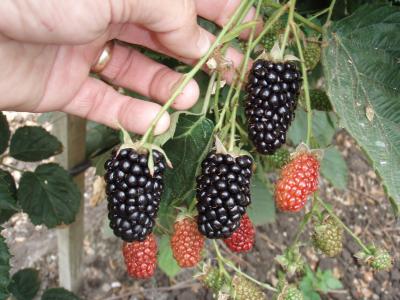The Rift Valley fever virus is a mosquito-borne African virus that causes fever in humans, inflicting liver damage, blindness and even death on a small percentage of the people it infects. Rift Valley fever also afflicts cattle, goats and sheep, resulting in a nearly 100 percent abortion rate in these animals. Its outbreaks periodically cause economic devastation in parts of Kenya, Somalia, Sudan and Zimbabwe, and bioterrorism experts warn that its introduction to the United States would cripple the North American beef industry.
Researchers at the University of Texas Medical Branch at Galveston say they have discovered a key tactic that the Rift Valley fever virus uses to disarm the defenses of infected cells.
Plants are obviously essential to our survival and that of most other animals on earth but it is easy to overlook how they have become discretely embedded into our everyday lives; plants provide us with food, medicines, and raw materials used by our industries.
Despite their importance, very few of us could name more than a tiny fraction of the plants that surround us and while most of us could easily between a buttercup and a dandelion (provided both are in flower), only a hand full of experts could identify all 1600 native plants in the UK - and nobody is able to name all of the 250,000 or so plant species recorded world-wide.
Introducing 'Natchez', the twelfth release in a series of erect-growing, high-quality, productive, floricane-fruiting blackberry (Rubus L. subgenus Rubus Watson) cultivars developed by the University of Arkansas.
According to John R. Clark and James N. Moore of the Department of Horticulture at the University of Arkansas, the new blackberry is a result of a cross of Ark. 2005 and Ark. 1857 made in 1998. The original plant was selected in 2001 from a seedling field at the University of Arkansas Fruit Research Station in Clarksville, and tested as selection Ark. 2241.
'Natchez' produces large fruit, near 9 grams on average in research trials. Fruit of 'Natchez' are elongated, somewhat blocky, and very attractive with an exceptional glossy, black finish.
How many arms does a spiral galaxy have? Can you spot a galaxy with a central “peanut” bulge? How about a galactic merger? You won't need a towel to write an astronomical 'Hitchhiker’s Guide to the Galaxy', just a computer. Answers to these and other strange questions will be provided by worldwide web users in an online citizen science project called Galaxy Zoo 2, which launches today.
Participating in certain mental activities, like reading magazines or crafting in middle age or later in life, may delay or prevent memory loss, according to a study released today.
The study involved 197 people between the ages of 70 and 89 with mild cognitive impairment, or diagnosed memory loss, and 1,124 people that age with no memory problems. Both groups answered questions about their daily activities within the past year and in middle age, when they were between 50 to 65 years old.
Preschool children who are securely attached to their mothers form closer friendships in the early grade-school years for a number of reasons, according to a new University of Illinois study published in Child Development.
Scientists have known about the link between attachment and friendship quality, but they haven't understood the reasons it exists.
The study included 1,071 children from the National Institute of Child Health and Human Development Study of Early Child Care and Youth Development. Researchers assessed mother-child attachment at age three. They also assessed how openly mothers and children acknowledged and communicated about their emotions when the child was four and a half.
 Opioid Addicts Are Less Likely To Use Legal Opioids At The End Of Their Lives
Opioid Addicts Are Less Likely To Use Legal Opioids At The End Of Their Lives More Like Lizards: Claim That T. Rex Was As Smart As Monkeys Refuted
More Like Lizards: Claim That T. Rex Was As Smart As Monkeys Refuted Study: Caloric Restriction In Humans And Aging
Study: Caloric Restriction In Humans And Aging Science Podcast Or Perish?
Science Podcast Or Perish?









